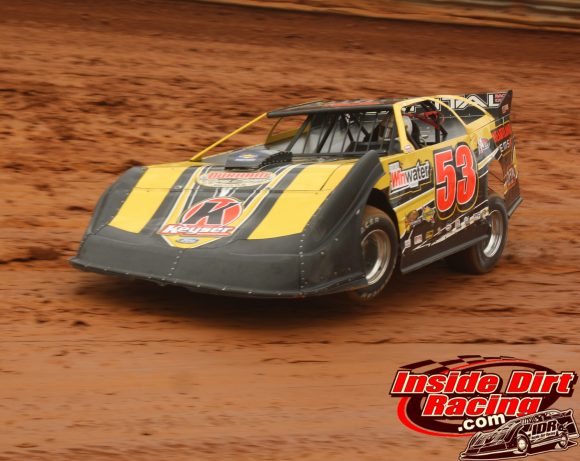One of the most fascinating aspects of racing is the degree of changes a track can go through from one event to the next or even from the beginning to the end of a particular race. And this is true whether the form of racing in question takes place on dirt or on asphalt. This past weekend there was much discussion in NASCAR regarding the aging pavement at the Atlanta Motor Speedway. At the same time, the dirt surface at the Volunteer Speedway in Bulls Gap, Tennessee, where the Iron-Man Series Late Models and Modifieds were contesting an event, played a determining factor in the racing action as well.
The track in Atlanta has not been repaved in over two decades, and as always seems to be the case when an event is held at that facility, there was discussion as to whether new asphalt should be put down before the Monster Energy NASCAR Cup Series and its support divisions return to the 1.5-mile layout located just south of the Georgia state capital. Drivers, crew chiefs, media members and fans alike weighed in to offer their opinions either for or against a repave. But no matter what your take, there is little doubt that the racing was impacted by the age of the asphalt which causes extreme tire wear resulting drop-offs in lap times throughout each run.
Add to the uncertainty of the old pavement the fact that it rained prior to the race and the situation became that much trickier for drivers and their crews. However, one condition that often affects paved tracks was not much of a factor on Sunday in Atlanta as the sun remained hidden behind cloud cover for most of the day. Temperature variations can turn a good race car setup bad in an instant, which only adds to the intrigue.
Those who routinely follow dirt racing know that tracks can change by the minute as the amount of water applied, the use of graders and other machinery, the sun, the wind, the humidity, and even the number of cars competing on it can greatly impact any clay surface. Just because a track races one way on a given night in no way means it will race that same way the next night or the next week.
Just like in Atlanta, the venue in Bulls Gap took on a significant amount of water provided by Mother Nature before the race cars hit the high banks. As a result, the track was “tacky” and wide-open fast. But at the same time, the high speeds and rough conditions proved to be very demanding on equipment. As a result, reliability of the racing machines was put to the test.
Whether it be on asphalt or dirt, the ability of a driver and crew to adapt to the changes created by changing track surfaces provides an extra bit of intrigue to the racing on any given day or night.
In the opinion of this writer, racing is always made better when the racing surface has a degree of unpredictability. When tracks like those in Atlanta are repaved, it does bring about much higher speeds. At the same time, however, fresh pavement also tends to bring about a situation in which cars run single-file along the bottom of the track.
A repaved AMS would simply be just another 1.5-mile high speed cookie cutter on the NASCAR circuit rather than a venue with uniqueness and character to provide an added element of challenge for the competitors.

Dirt track operators like those at Golden Isles Speedway must constantly work the surface to provide great racing
Likewise, dirt track preparation can not only create a variety of racing surfaces at the same venue but also greatly impact the quality of racing to be seen that day or night. Whether hammer-down fast or dry-slick, the condition of the clay can make all the difference in terms of the quality of the show. So it is important for overseers to constantly stay on top of track conditions.
In that same light, those who are in charge of tracks such as AMS have the responsibility to provide a surface that will create great racing while also offering safe conditions for the competitors. The track in Atlanta featured good racing and plenty of intrigue with the varying strategies as they played out. The increased tire wear on the older pavement along with fuel mileage gambles left the outcome in doubt until very late in the race. And that’s typically what fans and promoters want, isn’t it?
Repaving asphalt tracks should be put off as long as is safe to do because of the unpredictability the surface causes. Further, it is up to dirt track promoters to constantly work the clay in order to provide racers and fans with the variety that spices up racing.
Richard Allen is a member of the National Motorsports Press Association
Respond to this piece on Twitter –> @RichardAllenIDR







